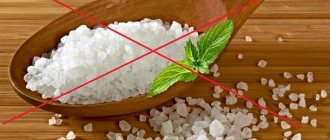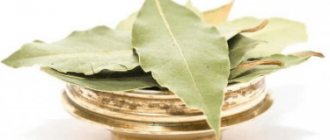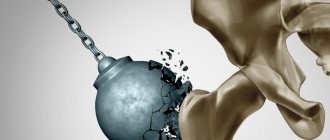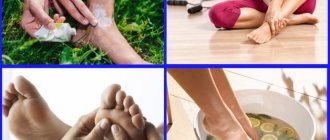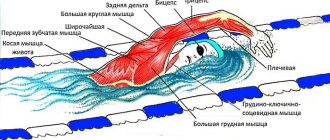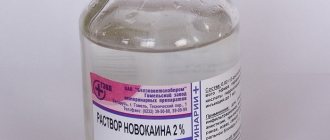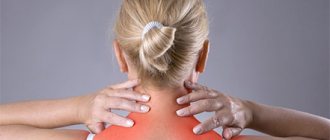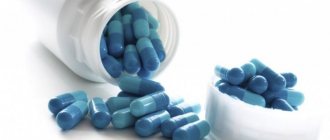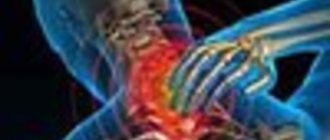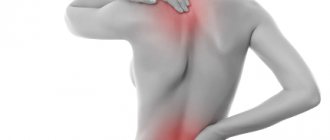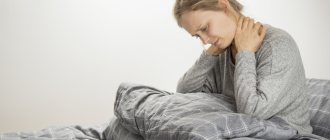Osteochondrosis of the cervical spine is a disease that can bring not only pain and discomfort, but also various complications that affect the functioning of the entire body. Therefore, doctors recommend taking preventive measures to prevent the disease, and starting treatment at the first symptoms.
As a rule, for complete healing, medications, ointments are prescribed, and a whole range of procedures is used, including traditional methods of treatment. Is it possible to treat osteochondrosis by dousing it with cold water? We will examine it in detail. How water affects the body and what the benefits of the procedure are - everyone needs to know all this.
Features of dousing - what you need to know
Before starting the procedure, it is important to know that cervical osteochondrosis can be treated by pouring cold water only if there is no inflammation in the body. You need to start gradually, moving from water at room temperature to colder water.
It is worth noting that dousing with cold water brings not only benefits, but also harm, and has its contraindications, especially when a person:
- increased blood viscosity, which leads to heart attack or stroke;
- the development of thrombosis is observed;
- thrombophlebitis;
- during exacerbation of chronic diseases;
- for flu, colds.
Therefore, it is recommended to visit a doctor, undergo a routine examination and make sure there is no inflammation in the body.
The basic rule for dousing with cold water for osteochondrosis is to pour only the back area, the water should flow quickly, in a wide stream from the cervical vertebra to the sacrum, you can pour water on the head. After this procedure, you need to quickly rub your back with a terry towel.
Those people who are afraid of cold water and cannot bring themselves to douse themselves with it can use a contrast shower, but the temperature difference of the water should be 40 degrees hot and 20 degrees cold, the procedure is carried out no more than 7 times.
Interesting to know! With the development of cervical osteochondrosis, the question always arises: is it possible to heat osteochondrosis of the cervical spine, and doctors answer unequivocally, it is impossible to heat it. This is due to the fact that with cervical osteochondrosis, tissue swelling occurs, they compress the vertebral arteries and nerve endings, causing pain. Be aware that when warmed up, tissue swelling occurs, which aggravates the problem, the pain intensifies, and the sciatic nerve may also be pinched.
Osteochondrosis is now significantly younger and develops not only in older people, but also in young people, and the main reasons are:
- sedentary lifestyle;
- lifting weights;
- incorrect posture;
- hormonal imbalance;
- unbalanced diet;
- infectious diseases;
- spinal injury;
- hypothermia;
- stress;
- hereditary factors;
- age-related changes, bone degeneration.
These and other factors lead to poor circulation, resulting in spasms that cause pain in the spine.
Before carrying out this procedure, you need to ask yourself whether it is possible to douse yourself with cold water for osteochondrosis and what is the mechanism of action of cold water on the vessels.
Know! With osteochondrosis, you can douse yourself with cold water, since the action of such water leads to vascular spasms, but this is a short-term phenomenon, after which expansion occurs, blood flow to the joints increases sharply, and metabolic processes around the vertebrae intensify.
Cold water in osteochondrosis acts as an irritant and impulses from the cold irritant are sent to the brain, which gives the command to produce heat in the muscles, which reduces spasm and pain. You can start dousing yourself with cold water, gradually reducing its temperature.
Dousing is carried out after physical exercise, when a person is fully awake, and pain syndromes after the action of cold water recede, because:
- With a short-term effect of cold water on the receptors, enkephalins and endorphins, natural painkillers, which are produced by the body during physical activity and when the nerve endings are exposed to alternately negative and positive temperatures, begin to be sharply produced.
- Cold water constricts the blood vessels, and then they sharply expand and muscle spasms decrease, and the flow of nutrients to the sore joint increases.
- Cold water has an effect on the spine and acts as a short-term pain reliever, since the pain center in the brain is suppressed.
An important rule for those who are just trying to douse themselves with cold water is not to start dousing themselves with warm water.
The therapeutic effect consists of short-term stress of the body, the vessels sharply narrow, then quickly expand. Such vascular gymnastics makes it possible not only to harden the body from infectious diseases, but also to reduce pain in cervical and other types of osteochondrosis.
It has already been mentioned that osteochondrosis has made people look much younger, this applies to those young people who spend a lot of time sitting at the computer. They devote little time to physical exercise, which leads to disruption of the functioning of the vertebrae and the development of osteochondrosis.
A person should not only do physical exercises, move a lot, but exercises in water help a lot, because while swimming, the muscles between the vertebrae relax, the nerve roots are released, which significantly reduces pain.
For osteochondrosis, mineral springs are of great benefit, where mineral water is filled into a bathtub and a person lies down in it for 15 minutes; after taking 10 such baths, osteochondrosis gradually recedes.
Helping the spine with osteochondrosis using dips and douses
It is not for nothing that there is an opinion that after taking a shower or visiting a bathhouse, a person feels lightness in his body. Not only his mood improves, but also his physical condition. What is the secret of water procedures?
How it works
It would seem, what benefit can be derived from dousing with cold water for a disease such as osteochondrosis, when the slightest hypothermia is strictly contraindicated for the body? It turns out that cold water relieves pain symptoms and nervous tension, and has a beneficial effect on the functioning of internal organs, increasing their tone.
The mechanism of action of cold water suggests that following the spasm experienced by the blood vessels, there is an influx of blood due to relaxation of the vessels. It is the improvement of blood circulation that contributes to the restoration of functional disorders.
One should not ignore the fact that after dousing with water, there comes a moment when the work of all body systems is stimulated. By affecting the entire surface of the body, water seems to recharge it with its positive energy. This replenishment manifests itself in what can be observed visually - covering the body with pimples and raising the hairline.
Temperature of water used for dousing
When starting douches, you should not start with warm water, then gradually lowering its temperature. During the dousing process, the body should experience short-term stress, which will be replaced by vasodilation. At the initial stage, you should not be afraid of the dousing procedure itself, or the possibility of getting hypothermia and, as a result, catching a cold. If you use warm water for dousing, then no positive effect will be achieved, since there will be no contrast between the temperature of the skin and the water. By using cold water, we kind of give the blood vessels a kind of training aimed at increasing their ability to contract and expand.
In fact, after pouring cold water on oneself (and most importantly, on the back), a person experiences a sharp cooling, followed by a feeling of an influx of heat due to a rush of blood. In some rather rare cases, there is no thermal effect, which indicates the need to change the dousing technique. A qualified specialist will tell you how this should happen.
First - dipping, then - dousing
For those who have a bathtub, it is better to start with dips, i.e. complete immersion in water with a delay there of no more than five seconds. Having filled the bath with enough water to immerse the whole body, it is necessary to make emotional preparation. The body needs to be configured to the fact that the subsequent procedure will allow it to throw off not only negative energy, get a charge of vigor, but also cope with its ailments. Conduct a short auto-training with a simultaneous mental appeal to the Universe, in which you should express gratitude to water as the source of all living things. Thus, unity with the water in the bath is achieved, and it becomes capable of exerting its healing effect.
After getting out of the bathroom, you should not dry yourself - the water should dry on the skin due to the natural body temperature. To enhance the effect of the procedure, you need to go out into the fresh air. It’s easier to do this in your own home, but in an apartment you can use the balcony, or just open the window. Do some physical exercises in the form of bending and squats, after which you can go about your normal activities.
When pouring water, it is necessary to pour water from the container so that its flow falls on the head, and then goes along the back, along the spine. Further actions after dousing are identical to those that accompany dipping.
The effect of procedures on the spine
Osteochondrosis is the destruction of the vertebral discs. Therefore, with a diagnosis such as osteochondrosis, treatment may include dipping and dousing. Indeed, in this case, spasms are relieved from those muscles that have undergone painful changes. The nervous system reacts in a similar way, receiving an energetic stimulus for its regeneration.
Improving blood circulation ultimately helps relieve headaches and spinal pain.
In combination with massage, health-improving exercises and proper nutrition, the effect of douches only intensifies. Author: K.M.N., Academician of the Russian Academy of Medical Sciences M.A. Bobyr
Contraindications
Dousing with cold water is contraindicated:
- if a person is currently sick with the flu or other colds;
- with severe disease of the genitourinary system;
- for oncological diseases;
- during menstruation in women;
- irritations or inflammations on the skin, pustules or wounds;
- sick joints.
Please know that before you begin the hardening procedure, you need to undergo a full medical examination and consult a doctor. However, those who are allowed to douse themselves with cold water enjoy this procedure, as pain decreases, body tone increases and nervous tension decreases.
Recommendations for the prevention and prevention of osteochondrosis
To prevent osteochondrosis or reduce pain, people suffering from this disease are recommended to spend as much time as possible in a position in which the load on the intervertebral discs will be minimal, and at the same time, they need to stretch their back muscles as often as possible in order to support metabolic processes around the spine. General recommendations boil down to following the rules of a healthy lifestyle; in addition, in each specific case, the attending physician determines specific recommendations.
For prevention, the following rules should be observed:
- Do not overload the spine, do not create conditions that increase pressure in the intervertebral discs:
- limit vertical loads;
- do not make sudden movements, especially turning your body when bending over;
- avoid falls and jumps from great heights, injuries and bruises of the spine;
- change your body position more often;
- keep your back straight;
- try to maintain the natural physiological curves of the spine: when lying down, the load on the spine is minimal, but the bed should be semi-rigid (it is advisable to sleep on a solid orthopedic mattress and orthopedic pillow); in a sitting position, keep your back straight using your muscles or pressing it against the back of a chair or armchair (the seat should be quite rigid and the back should have a bend in the lumbar region), keep your head straight; when standing, change the leg on which you lean more often; getting out of bed or from a chair, as well as lying down and sitting down, should be done with the help of your hands without straining or bending your back;
- before physical activity, drink water and massage your back, this will speed up the blood, speed up metabolic processes and allow the intervertebral discs to absorb a sufficient amount of moisture;
- do not lift or hold heavy objects with outstretched arms; to lift an object, squat down and then stand up with it, while the objects should be as close to the body as possible;
- when carrying heavy objects, try to distribute the load evenly, that is, do not carry bags in one hand, etc., if you have to carry an object in front of you, keep it as close to your body as possible, and when passing it, do not stretch your arms forward, and also use for carrying heavy loads, trolleys, bags or suitcases on wheels, backpacks;
- when performing heavy work involving lifting, moving or carrying heavy objects, use a wide belt or a special corset;
- You should not lift a load of more than 10 kg;
- when performing any work, try to bend over and be in a bent state as little as possible and periodically unload the spine (hanging on the crossbar, stretching with raising your arms, resting while lying down);
- wear comfortable shoes; women should limit wearing high-heeled shoes;
- Regularly perform physical exercises aimed at strengthening and maintaining the muscle corset. Swimming lessons are useful.
- Take a contrast shower and harden your body.
- Don't get too cold.
- Avoid scandals and stressful situations.
- Eat right.
- Do not smoke.
Author: V.I. Dikul
